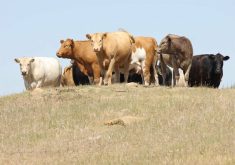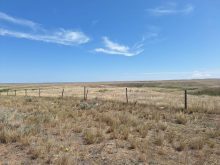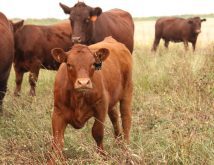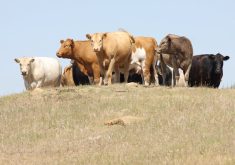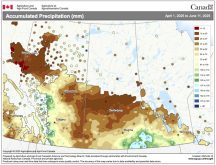Clayton Harder has plenty of experience with fungicides. That’s because he farms near Winnipeg, one of the wettest regions in Western Canada.
But this year he isn’t spraying fungicides on his canola, soybeans, wheat and other crops because conditions are severely dry on his farm north of Winnipeg.
“I spoke to a couple of other guys this morning … and almost nobody is using fungicide around here this year. Typically, we would spray everything with fungicide, because we live in a high moisture environment and disease is so prevalent,” Harder said this morning.
Read Also

Farming Smarter receives financial boost from Alberta government for potato research
Farming Smarter near Lethbridge got a boost to its research equipment, thanks to the Alberta government’s increase in funding for research associations.
“There is zero disease right now and there is lower yield potential, so it (fungicide) isn’t justifiable.”
Harder estimated that 15 millimetres of rain have fallen on his farm since seeding. That’s basically nothing for the region around Winnipeg, which normally receives 150 mm of rain in May and June.
Officially, based on Environment Canada data, 25 mm of rain fell on Winnipeg in June. In a normal year, Winnipeg receives about 90 mm of rain in June.
On July 2, Environment Canada said the first six months of 2019 were the driest on record for Winnipeg, with only 91.1 mm of precipitation from January 1 to June 30.
“It’s just been so far below normal, it’s just astonishing,” said Harder, vice-president of the Manitoba Canola Growers Association.
“I’ve only been farming for 20 years, (but) it’s the driest I’ve ever seen it.”
Consequently, crops in parts of the Red River Valley, central and eastern Manitoba are much shorter than normal.
“We have oats that are heading out (and are) below your knees,” Harder said. “Wheat is about the same. Canola is bolting below your knees.”
Chuck Fossay, who farms west of Winnipeg by Starbuck, Man., said crops are also shorter than normal on his farm.
The growing conditions are comparable to droughts in the 1980s, but with one exception — cool nights.
“In 1980 and 1989, if I remember right, we had these very hot days and hot nights and strong winds. Those conditions really dried out the crop and cooked it,” he said. “So far this year we’ve been getting some pretty cool nights. And the plants have put down some pretty good roots and they have a chance to recover a bit in the cool of the night.”
Therefore, crops like soybeans, corn and canola could still recover from the moisture stress. But rainfall is desperately needed in the region between now and the middle of July, Fossay said.
“If we don’t get a good shot of rain in the next week to 10 days, maybe two weeks at the outside, those crops aren’t going to be producing much.”
Contact robert.arnason@producer.com






